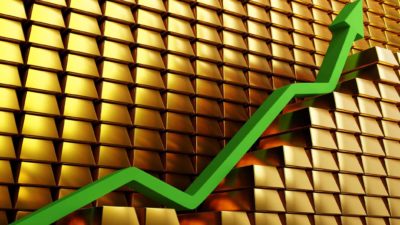Ah inflation… it's not a 'problem' we hear too much about these days. Well, at least not in the way we used to. I'm just old enough to remember the Reserve Bank of Australia (RBA) raising interest rates ahead of the 2007 election over worries that inflation was running rampant. We haven't heard any of those kinds of concerns in the 13 (soon to be 14) years since.
With the Australian (and global) economy still battling the recessionary effects of the coronavirus pandemic, inflation doesn't look to be a problem any time soon either.
Traditional economics tells us that inflation is usually a product of an economy 'growing too fast', of tight supplies of production inputs such as oil, iron ore and labour resulting in rising prices across the board. That's why interest rates used to be the first weapon of choice in fighting inflation.
If people have to spend more income servicing their mortgages and loans, they have less to spend in the economy. But interest rates have been at 'historic lows' for years now. And they got a whole lot more 'historically low' in 2020. The current cash rate stands at just 0.1%. That's a long, long way from the 6.75% the RBA increased it to back in 2007.
The statistics back this monetary action up. Back in the quarter ending 30 June 2020, the Australian Bureau of Statistics recorded the biggest quarterly fall in inflation since it began recording inflation all the way back in 1948 with a running annual figure of -0.3%. But later data from the quarter ending 30 September pushed that figure up to 0.7%. Still, that number is not what constitutes 'significant inflation'. That would be somewhere closer to 2–3%, which is the RBA's 'target band'.
Just when you thought inflation was gone for good…
But what if 2021 brings inflation back to the boiler? It's not as far-fetched as you might imagine from looking at those statistics.
According to reporting in the Australian Financial Review (AFR) this week, the US Federal Reserve's monetary policy actions this year (especially massive quantitative easing (QE) programs) have stoked significant fears of future inflation.
Why? Well, one statistic should shock you. The report tells us that "more than one in every five US dollars in existence was created in 2020 alone". More than one in five just this year.
Here in Australia, we haven't seen the same kind of monetary expansion. But the RBA has still cut rates to almost zero and launched its own program of quantitative easing. That's never been done here before.
More money, more problems
Simple economics and the laws of supply and demand tell us that if you increase the supply of something, its value decreases. And a currency losing its value is effectively inflation by another name.
That's why the report argues that it would be incredible to not see any adverse effects from this extraordinary monetary policy in the near future. You can't expand a currency's base by 20% without seeing some kind of 'value impact' — at least that's what conventional thinking would dictate.
We have seen evidence of investors preparing for this scenario too. Why do you think the prices of assets like property and shares, and especially gold and bitcoin, have been on the rise so dramatically in 2020? One likely explanation is that investors are fearful of leaving wealth in cash, preferring to instead chase finite and 'inflation-resistant' assets such as precious metals and cryptocurrencies.
Unlike US dollars, no one can just 'print more' gold or bitcoin. This scarcity has value for many investors, especially so if those investors believe that the US dollar's value is a melting ice cube. And with 20% more greenbacks in circulation today than this time last year, it's not hard to see their point if you follow the money. Thus, it might be prudent to think about how your personal wealth and ASX share portfolio might fare if inflation does make its way back in 2021 or beyond.









